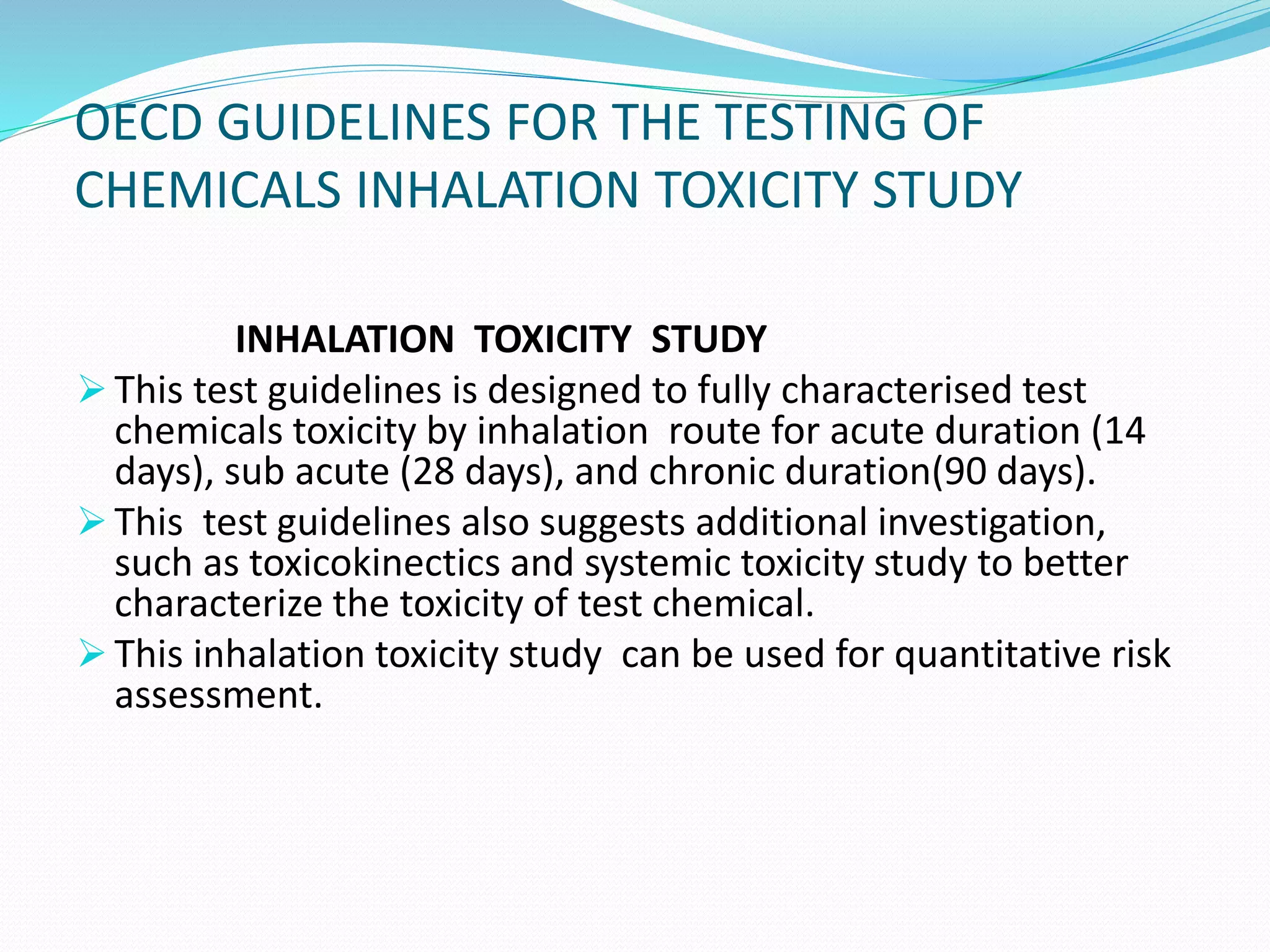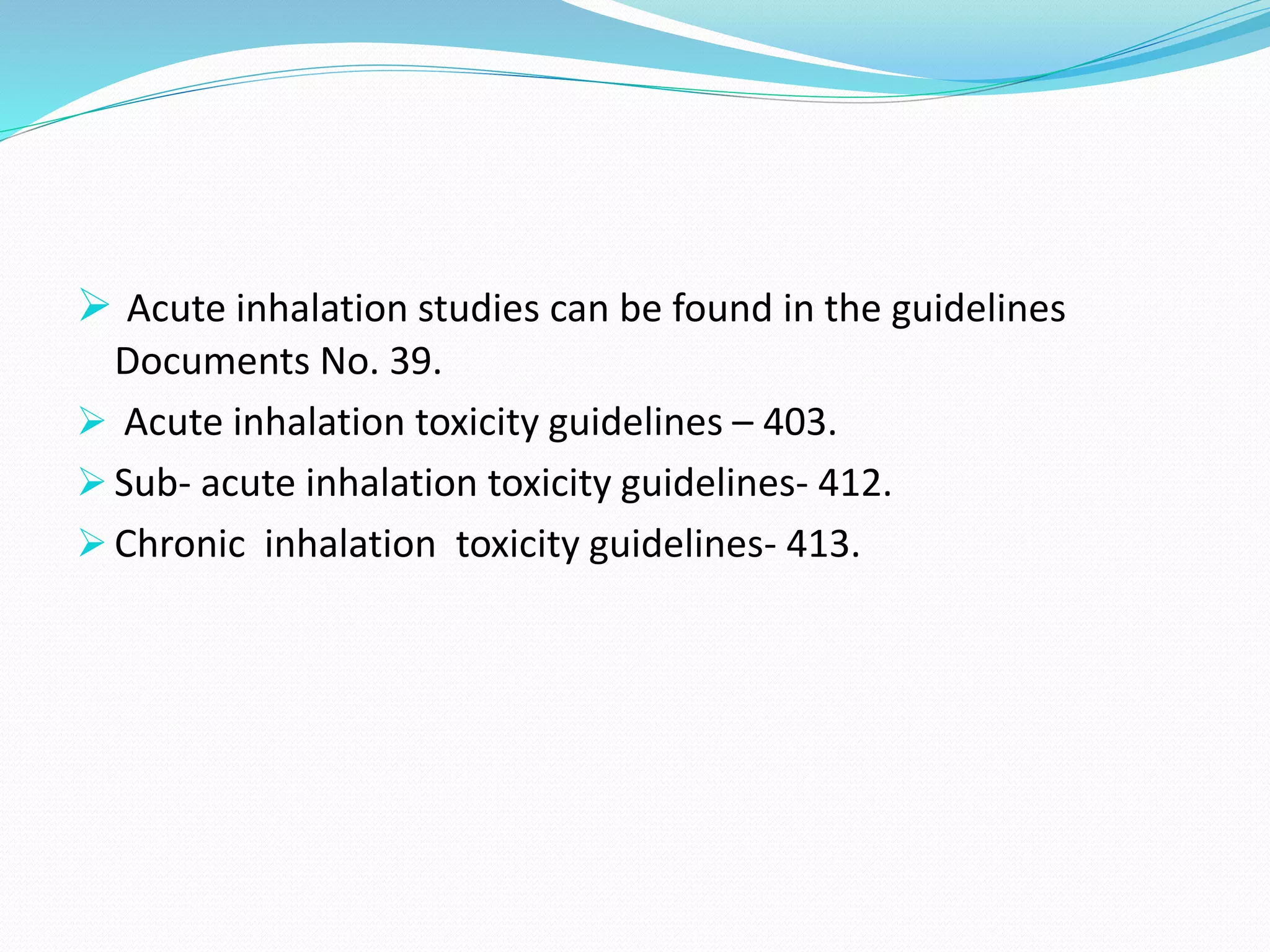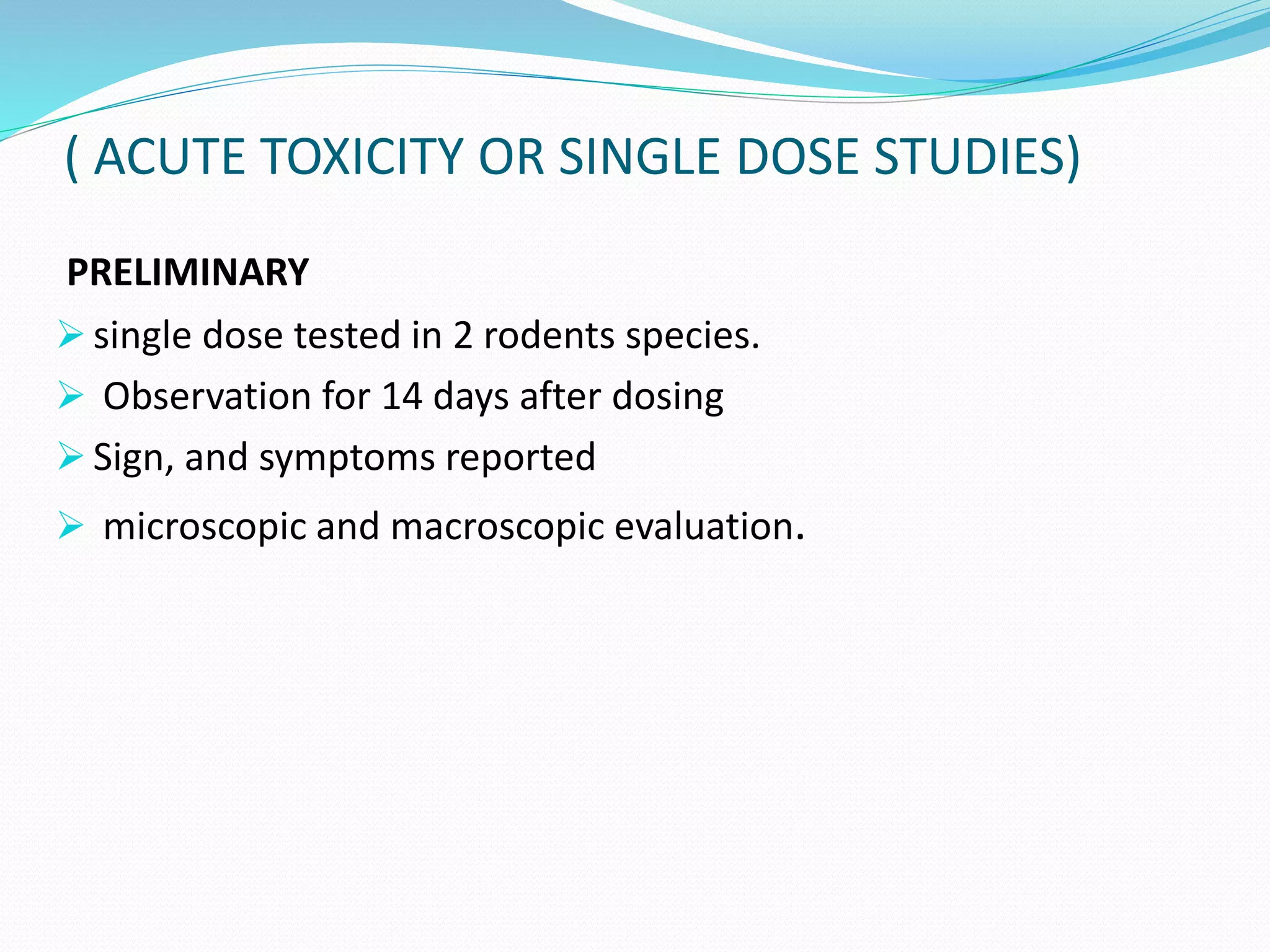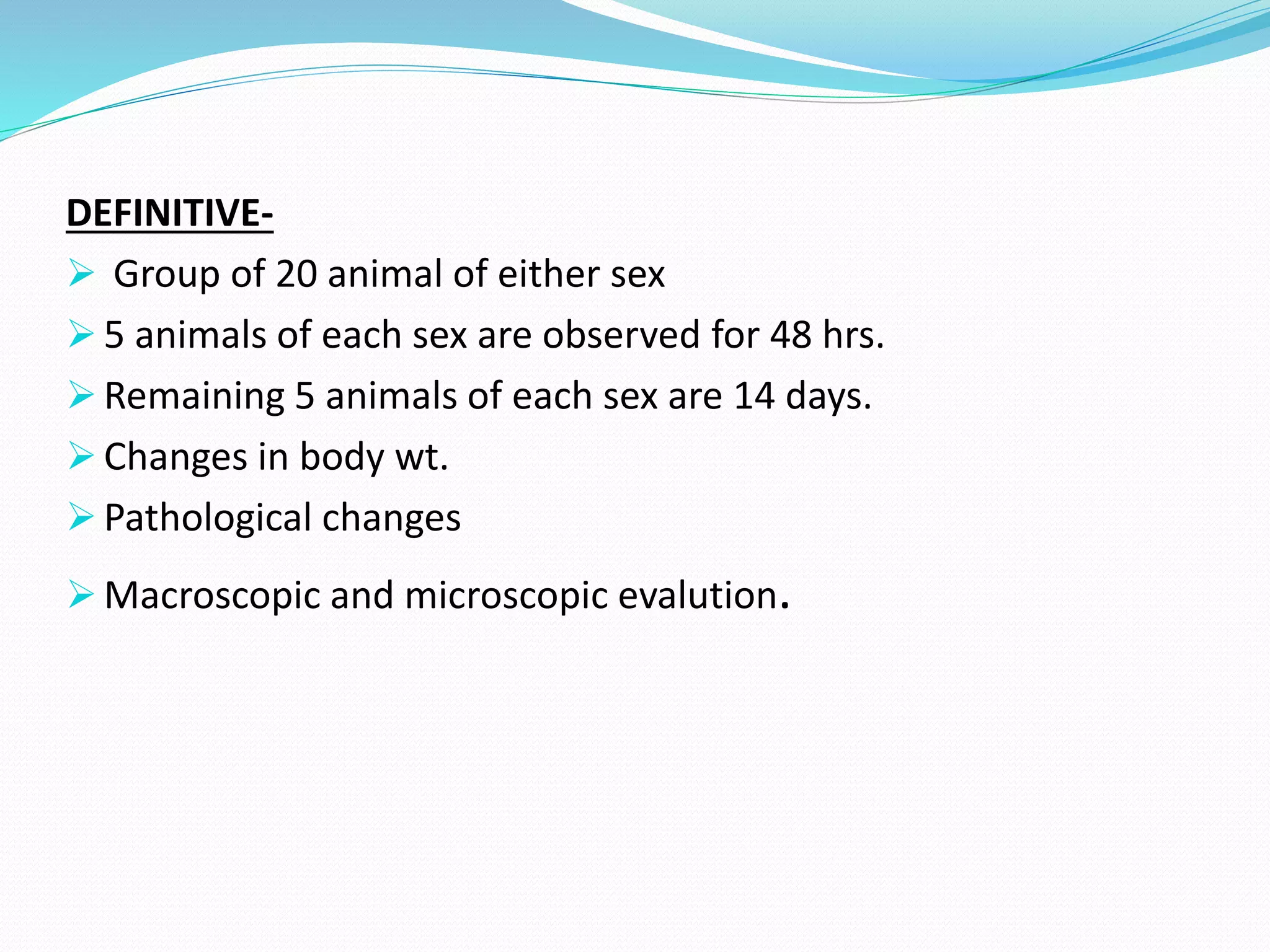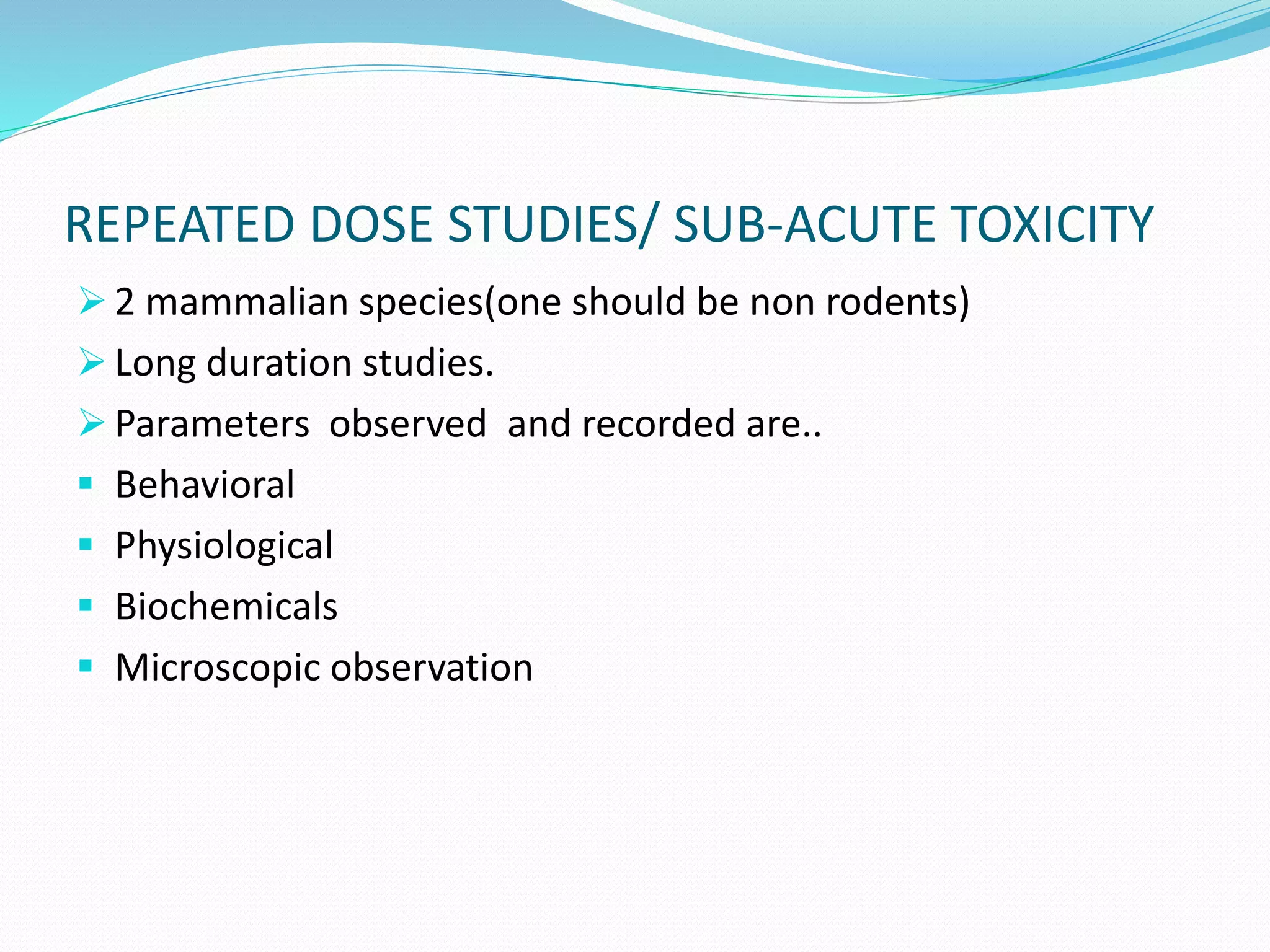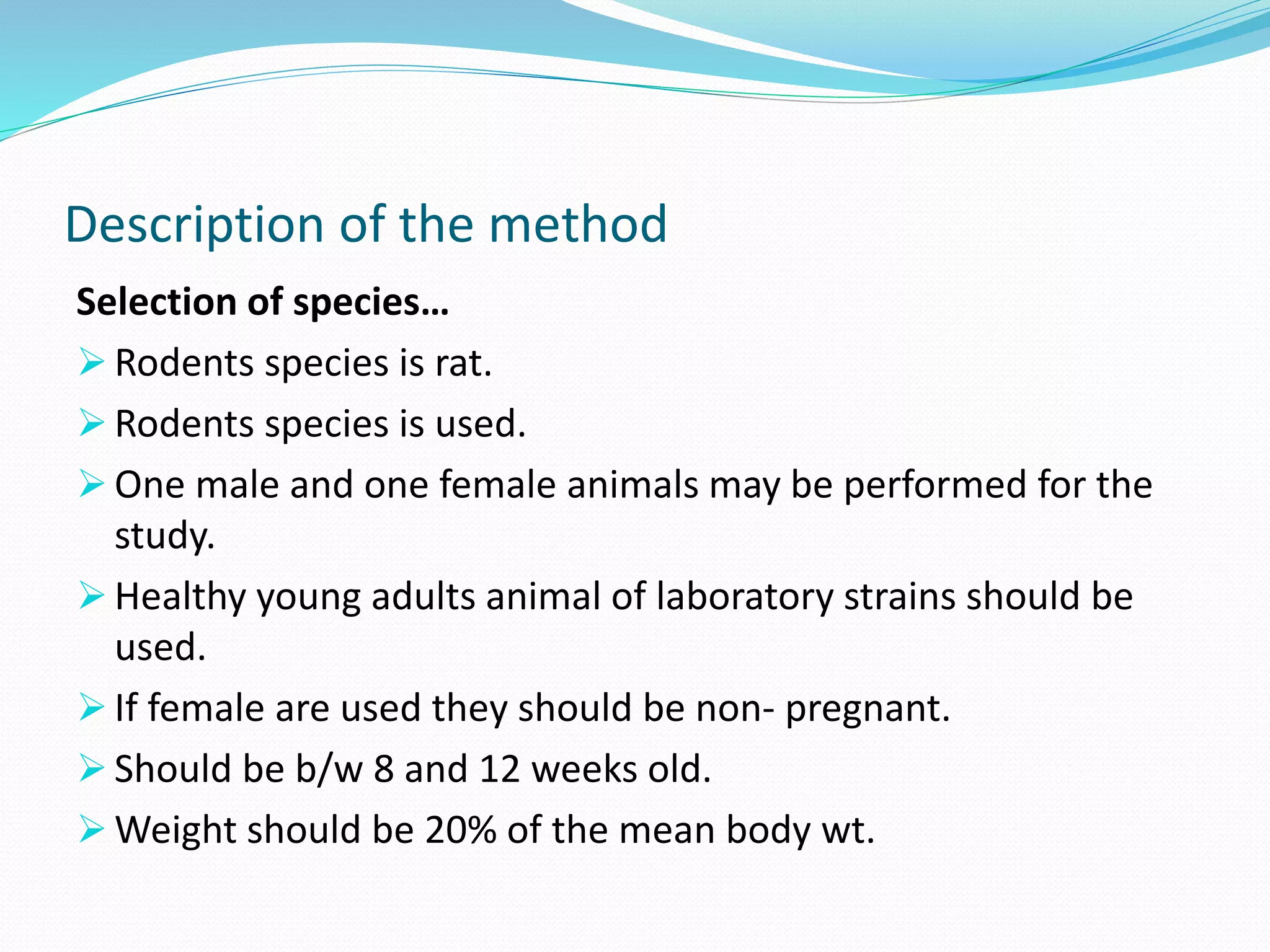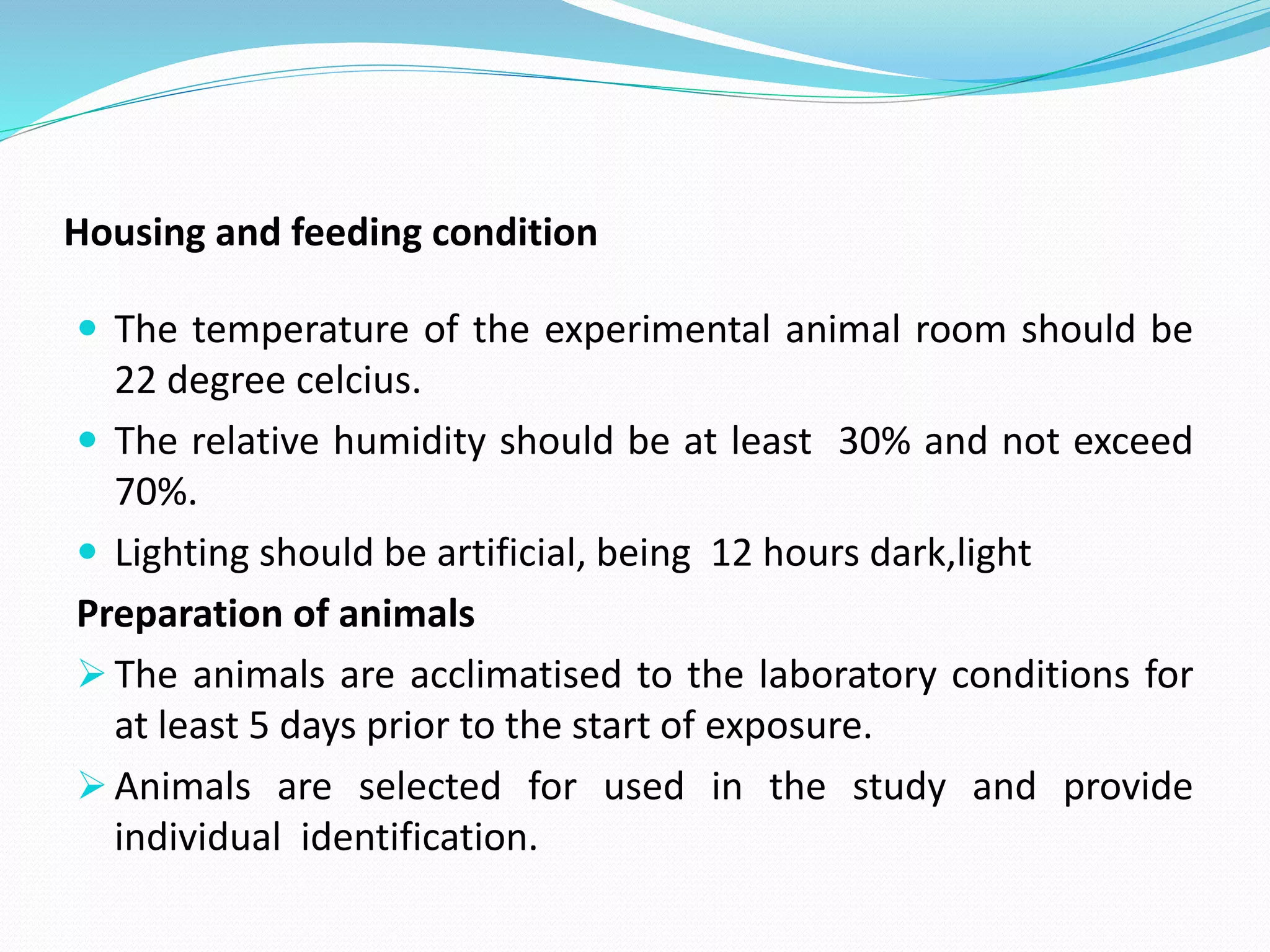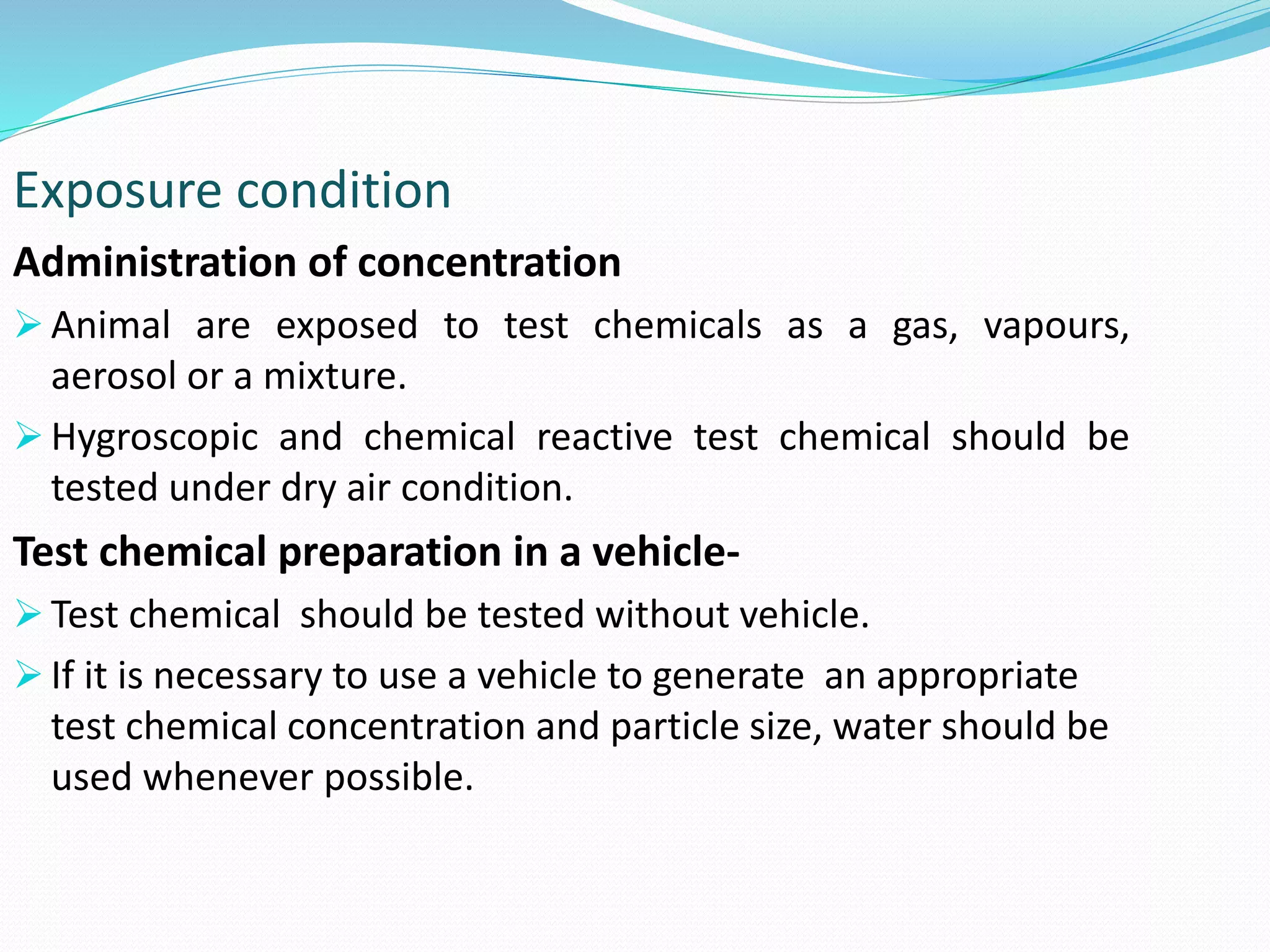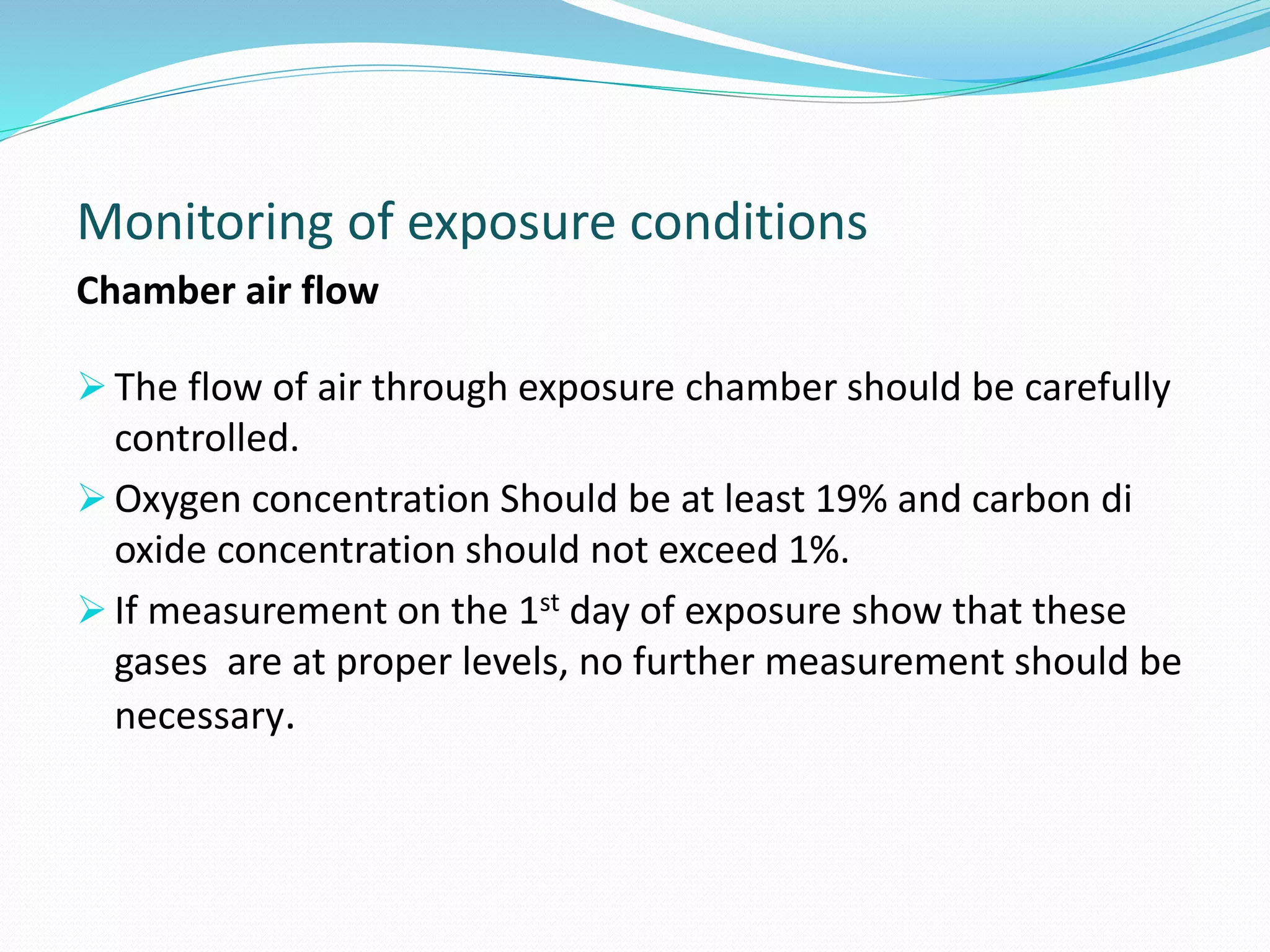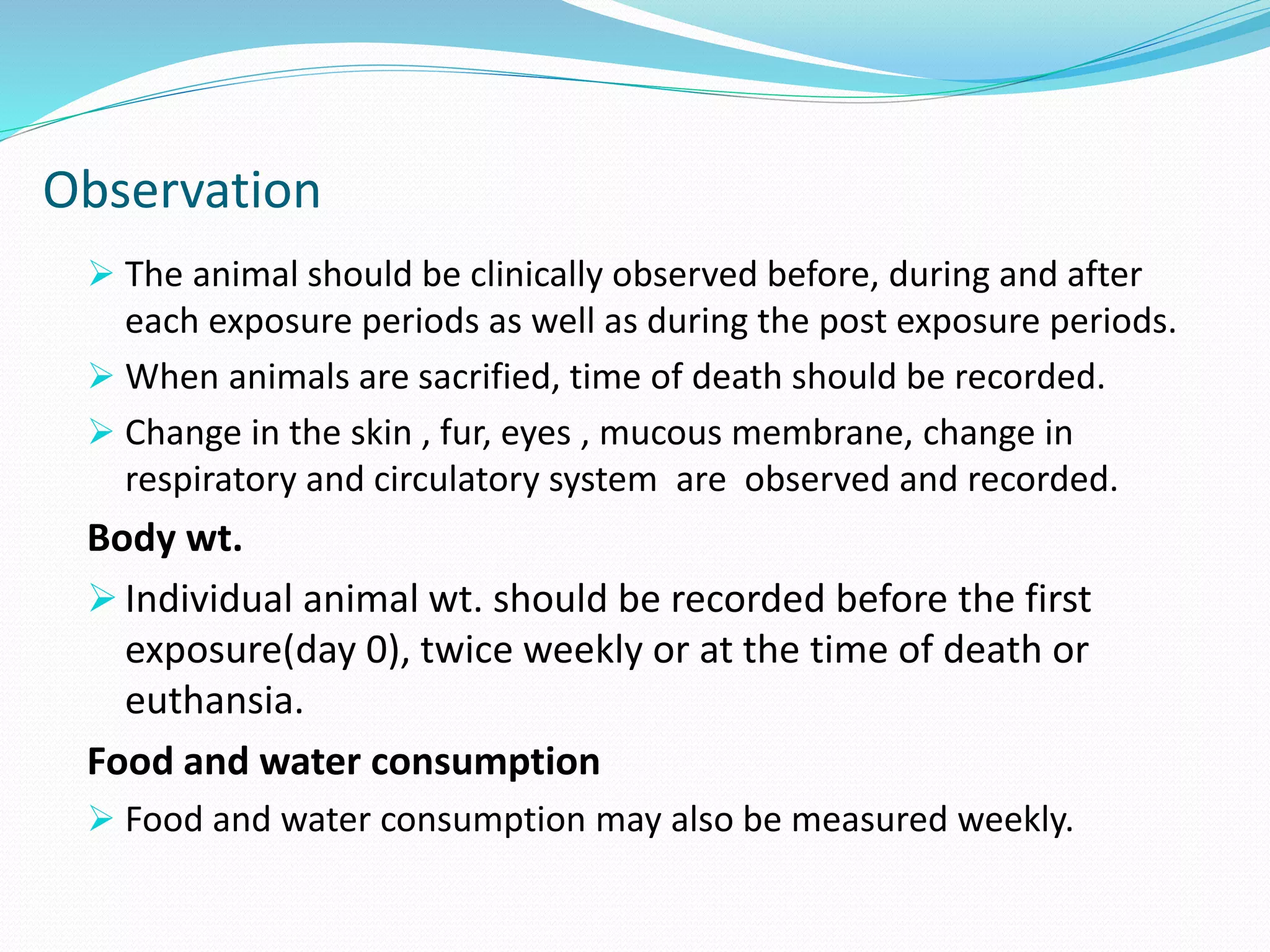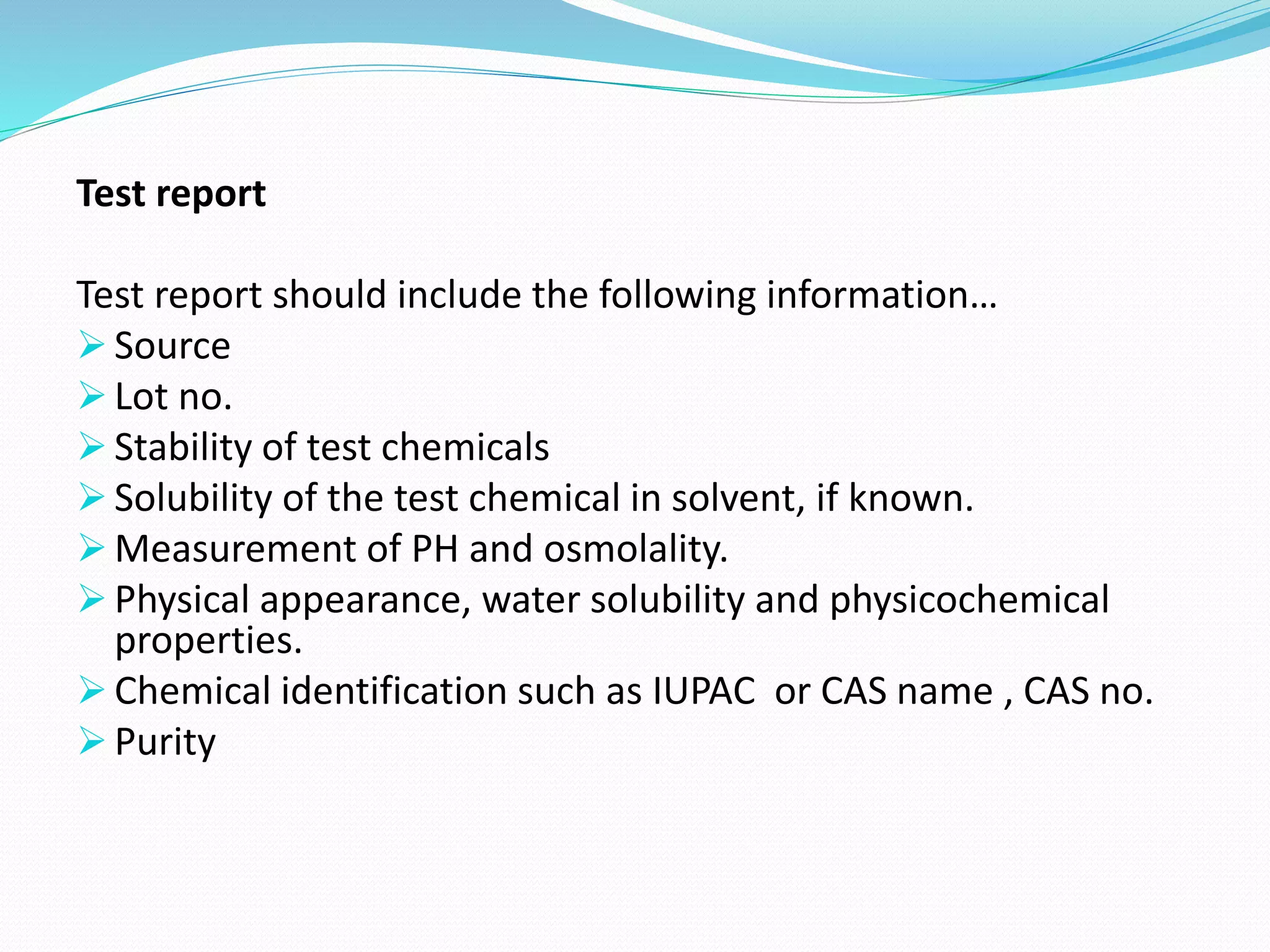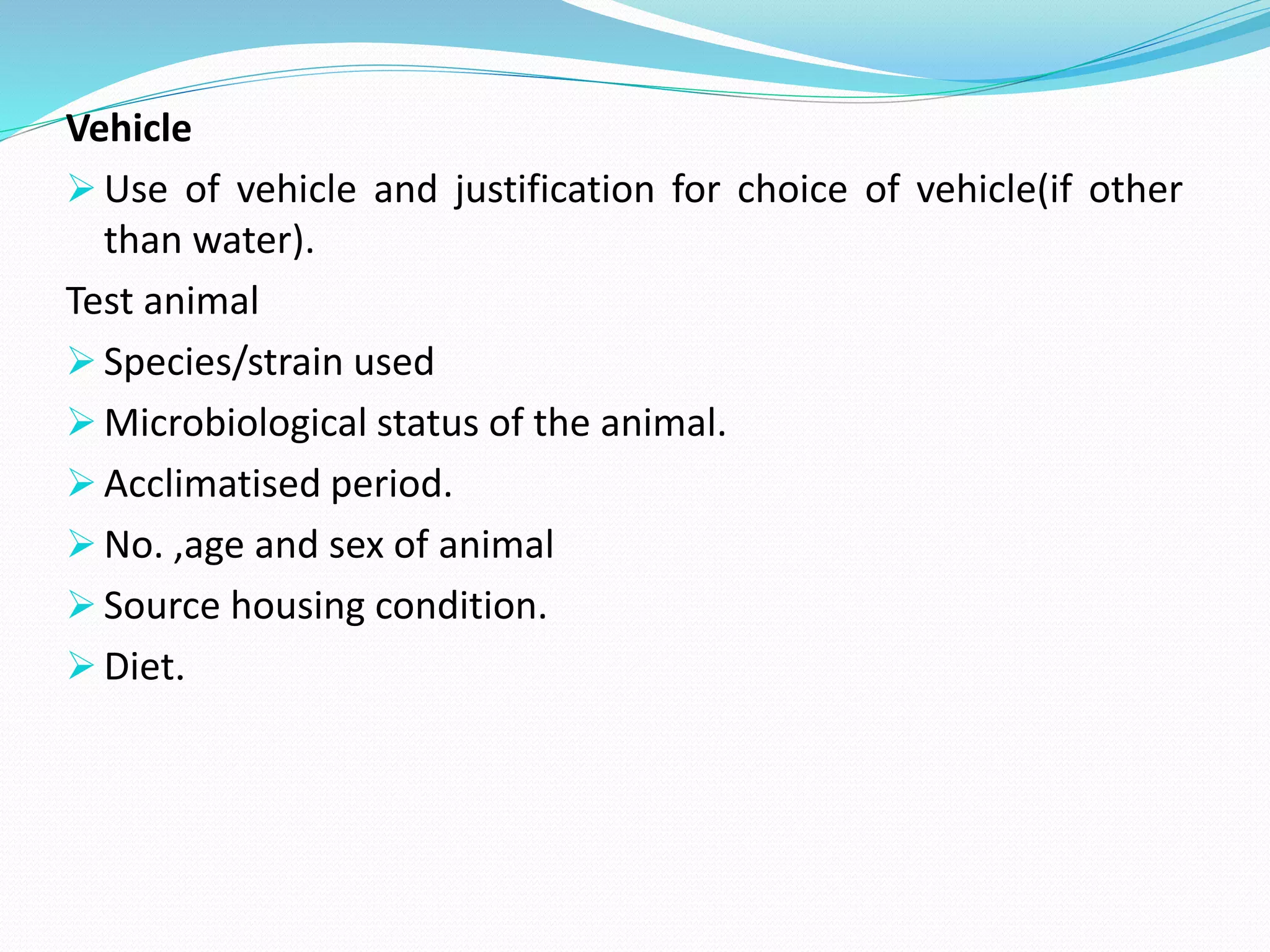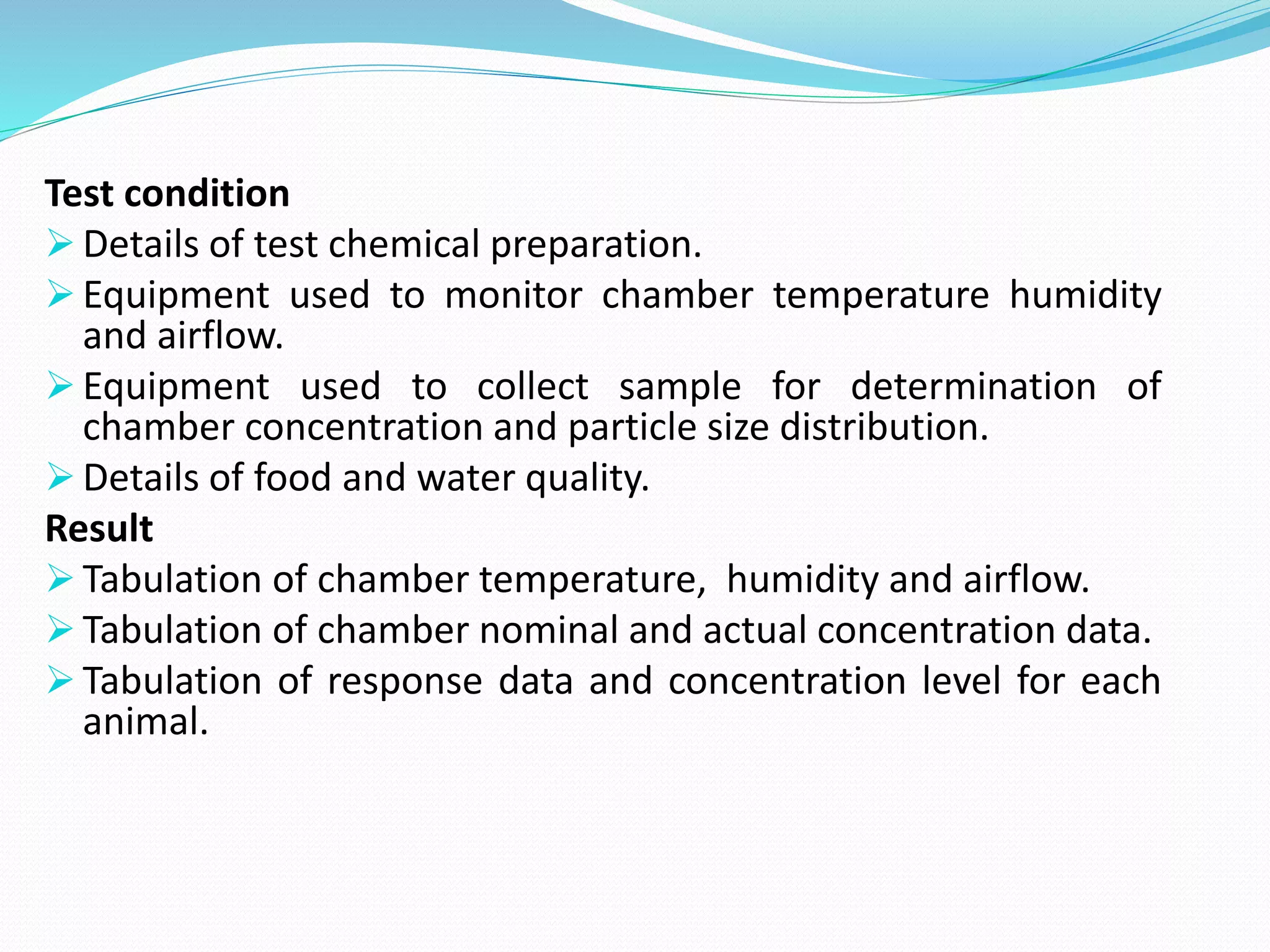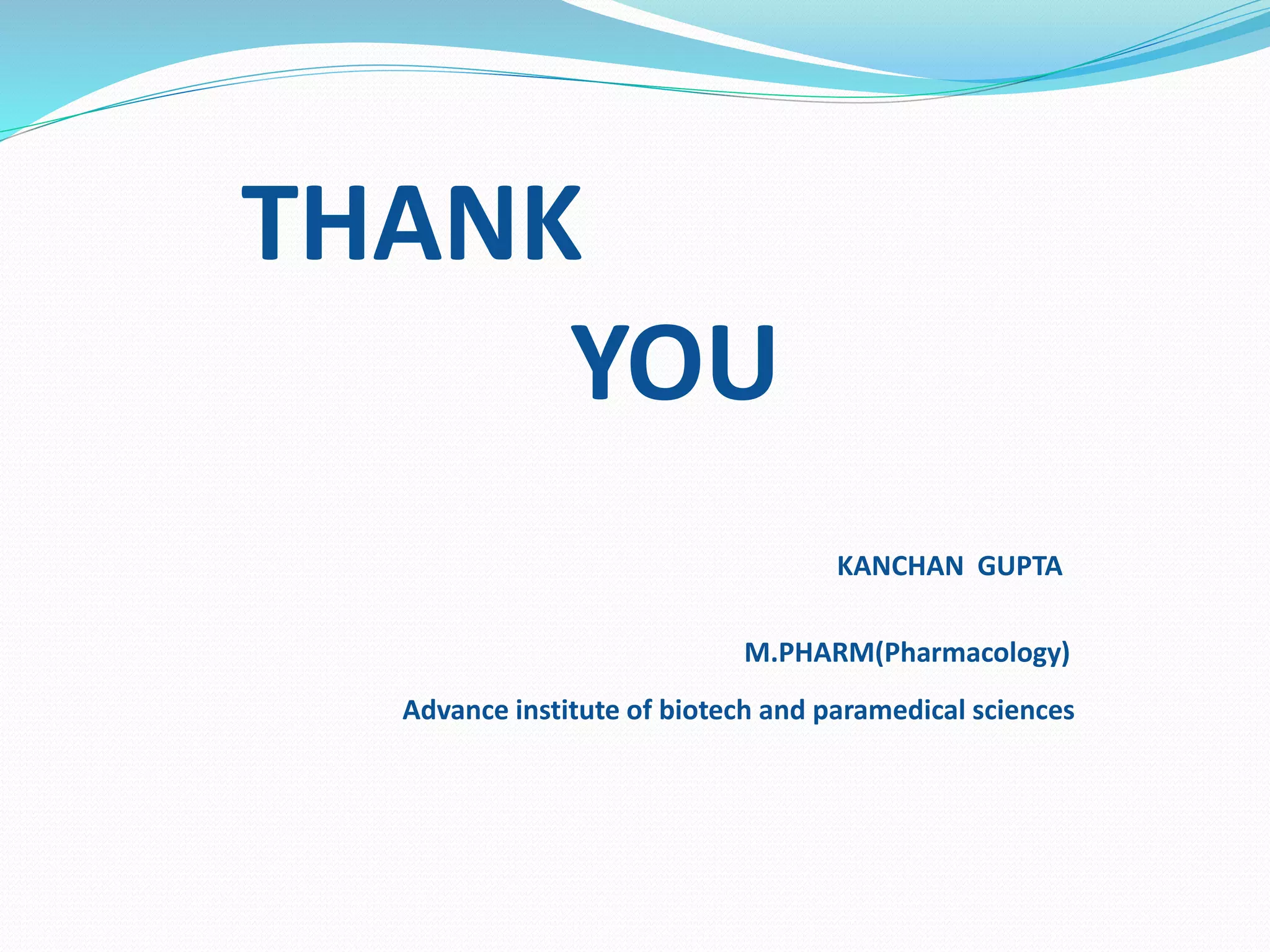The OECD guidelines for inhalation toxicity studies detail protocols for assessing the toxicity of chemicals over acute (14 days), sub-acute (28 days), and chronic (90 days) durations using mammalian species. The guidelines emphasize the importance of behavioral, physiological, and biochemical observations, as well as monitoring chamber conditions for effective exposure setups. Comprehensive data reporting and analysis, including individual animal observations and chemical properties, are outlined to ensure the reliability of toxicity assessments.
